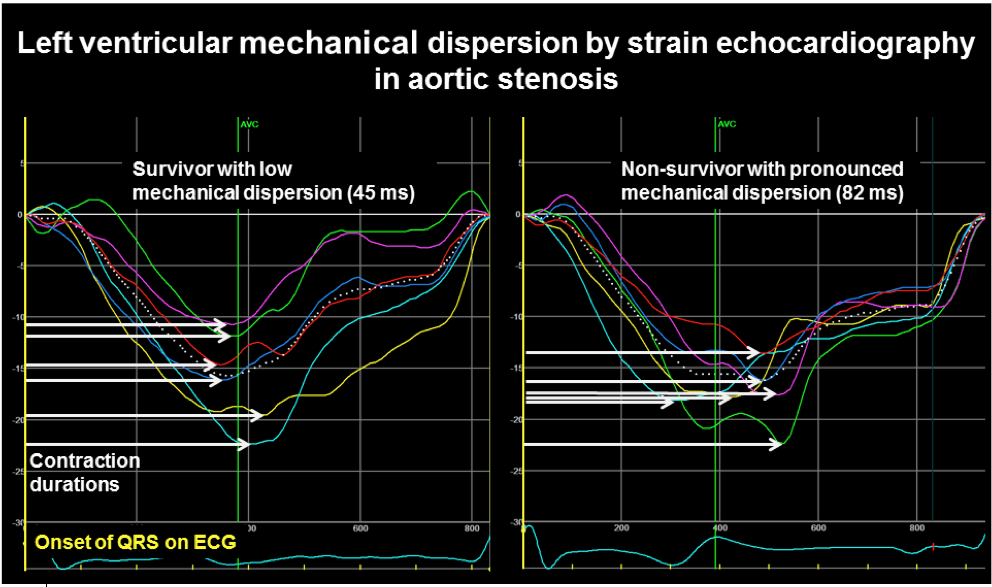Prognostic Value of Left Ventricular Deformation Parameters in Patients with Severe Aortic Stenosis: A Pilot Study of the Usefulness of Strain Echocardiography
Klaeboe LG, Håland TF, Leren IS, Bekke R, Brekke PH, Røsjø H, Omland T, Gullestad L, Aakhus S, Haugaa KH, Edvardsen T
In aortic stenosis, subtle alterations in myocardial mechanics can be detected by speckle-tracking echocardiography prior to reduction of left ventricular ejection fraction (LVEF). In this prospective study, 162 patients with severe aortic stenosis and preserved LVEF (60 ± 11%) were included. Surgical aortic valve replacement was performed in 120 patients, whereas 42 were deemed ineligible for surgery. During follow-up (37 ± 13 months), thirty-seven patients died. Mechanical dispersion was pronounced (64 ± 20 msec) in the total patient population. Pronounced mechanical dispersion at baseline was a predictor of mortality in patients with severe aortic stenosis independently of LVEF, flow status, or treatment (AVR vs medical treatment), providing incremental prognostic information in addition to LVEF, GLS, and correlates of flow and gradient.
